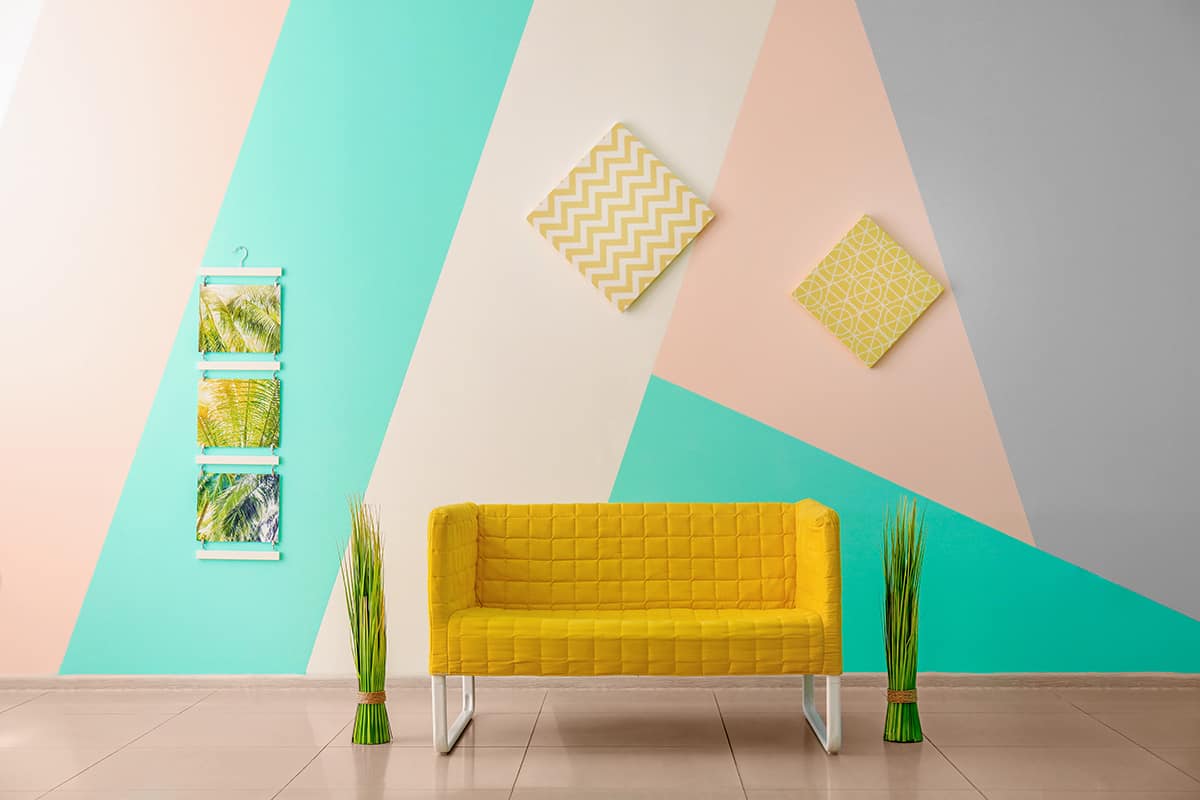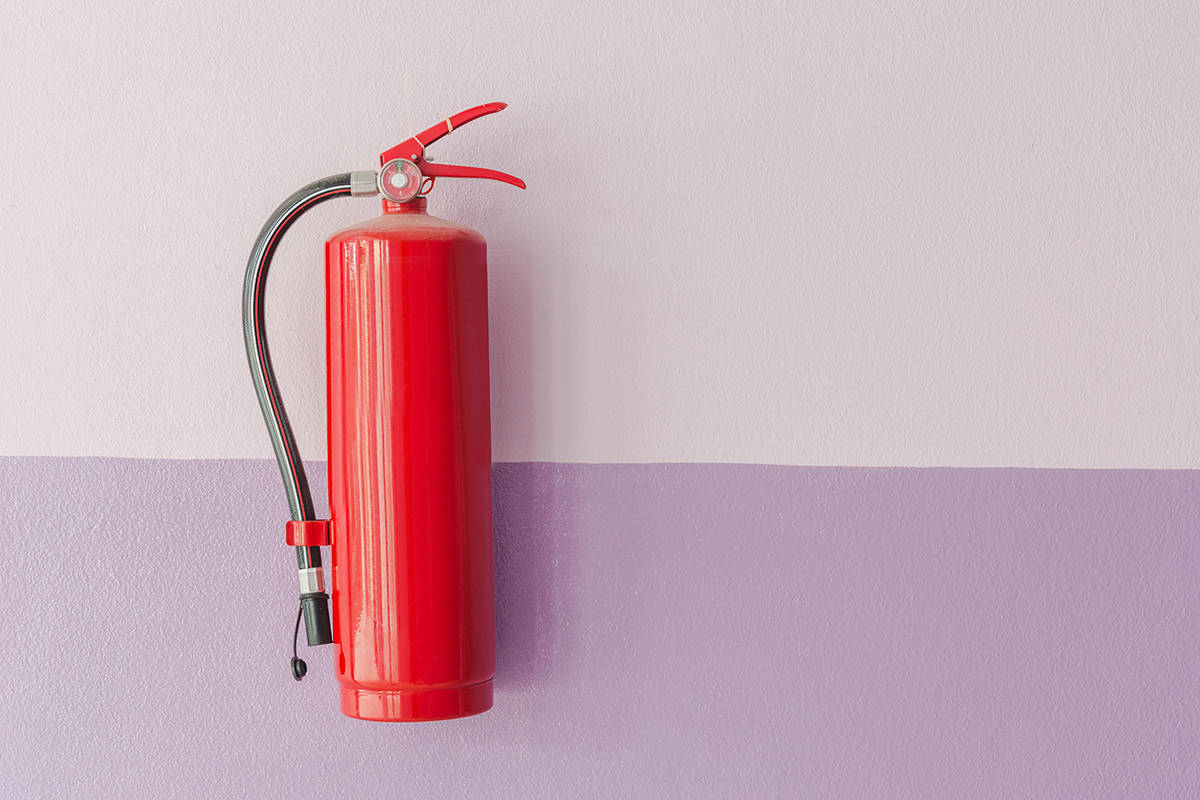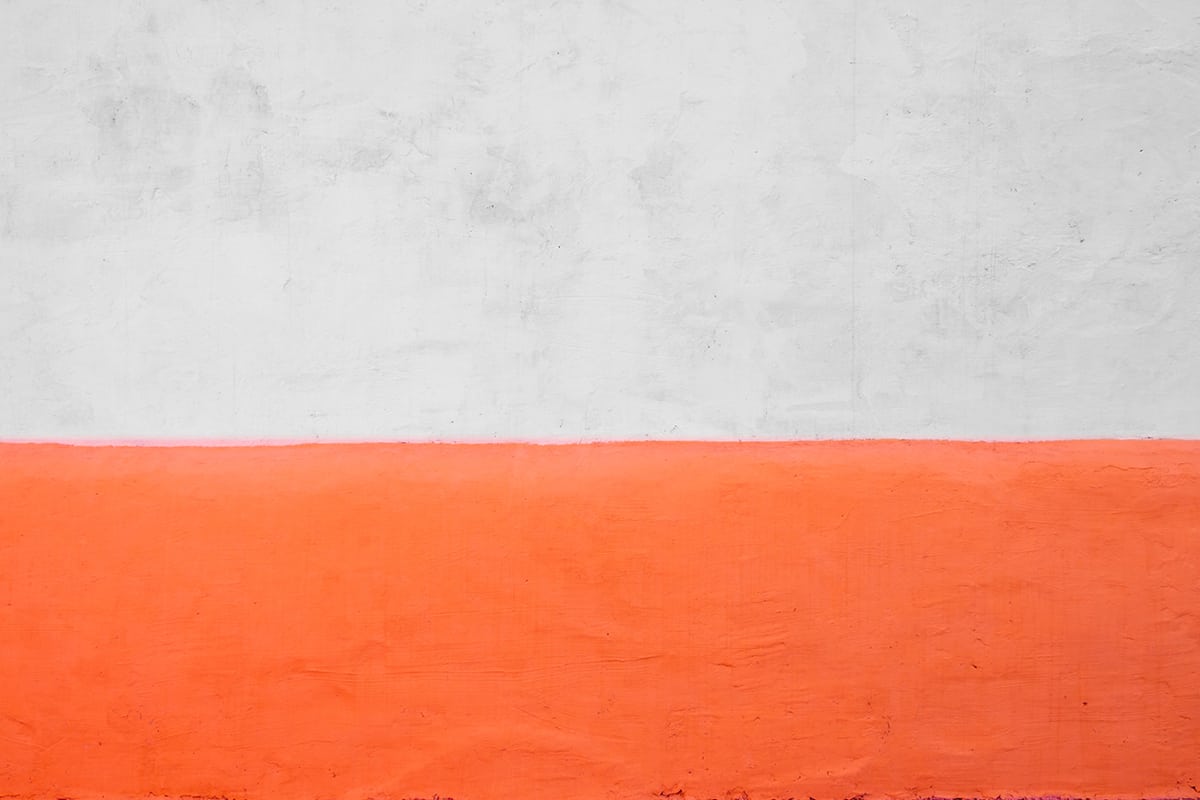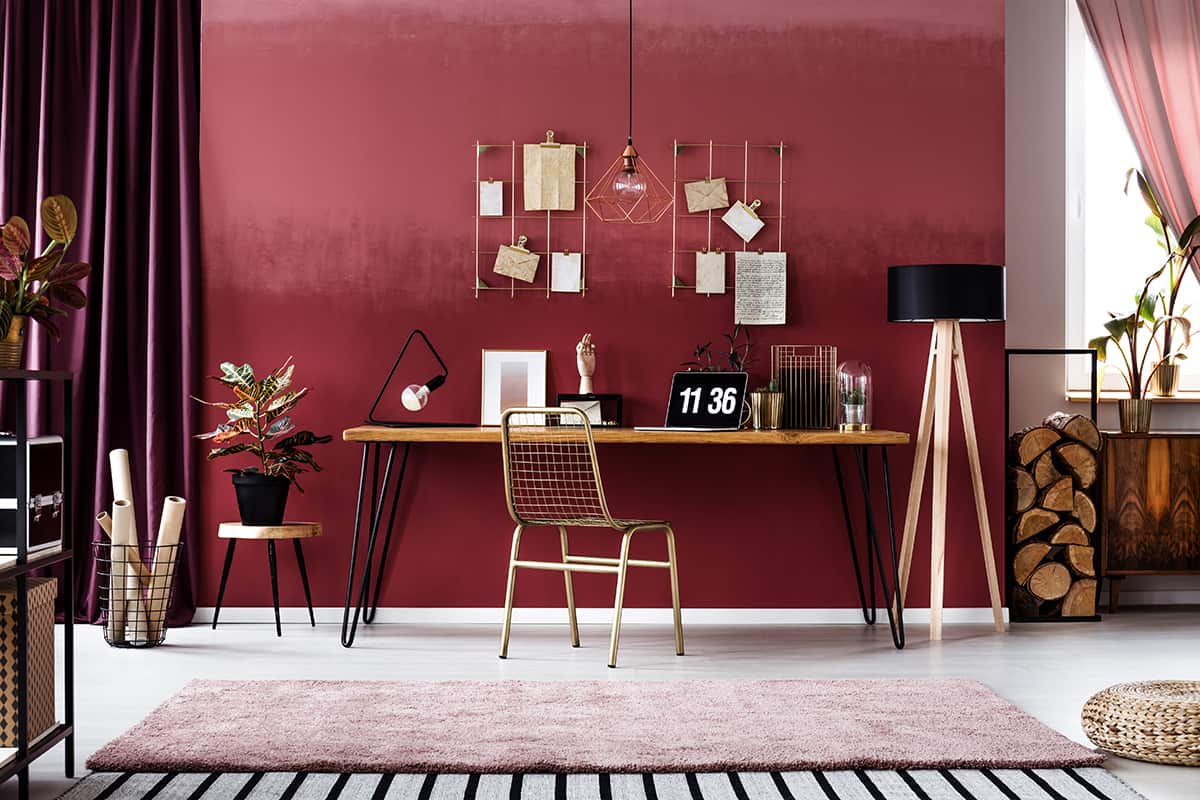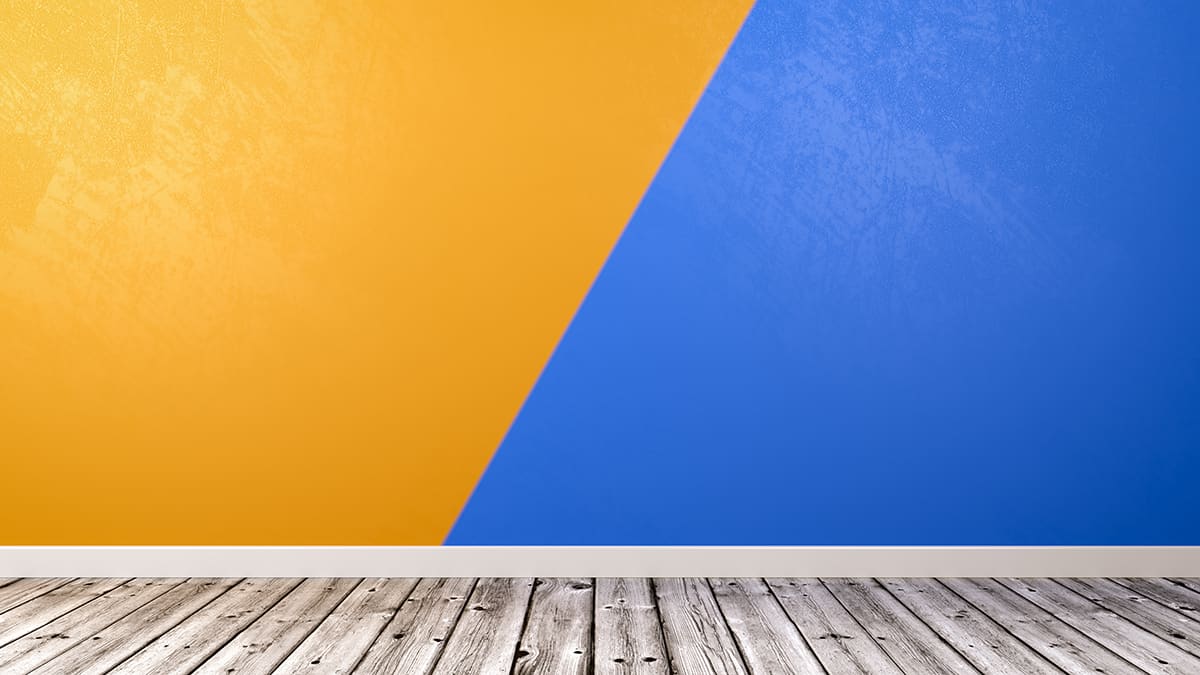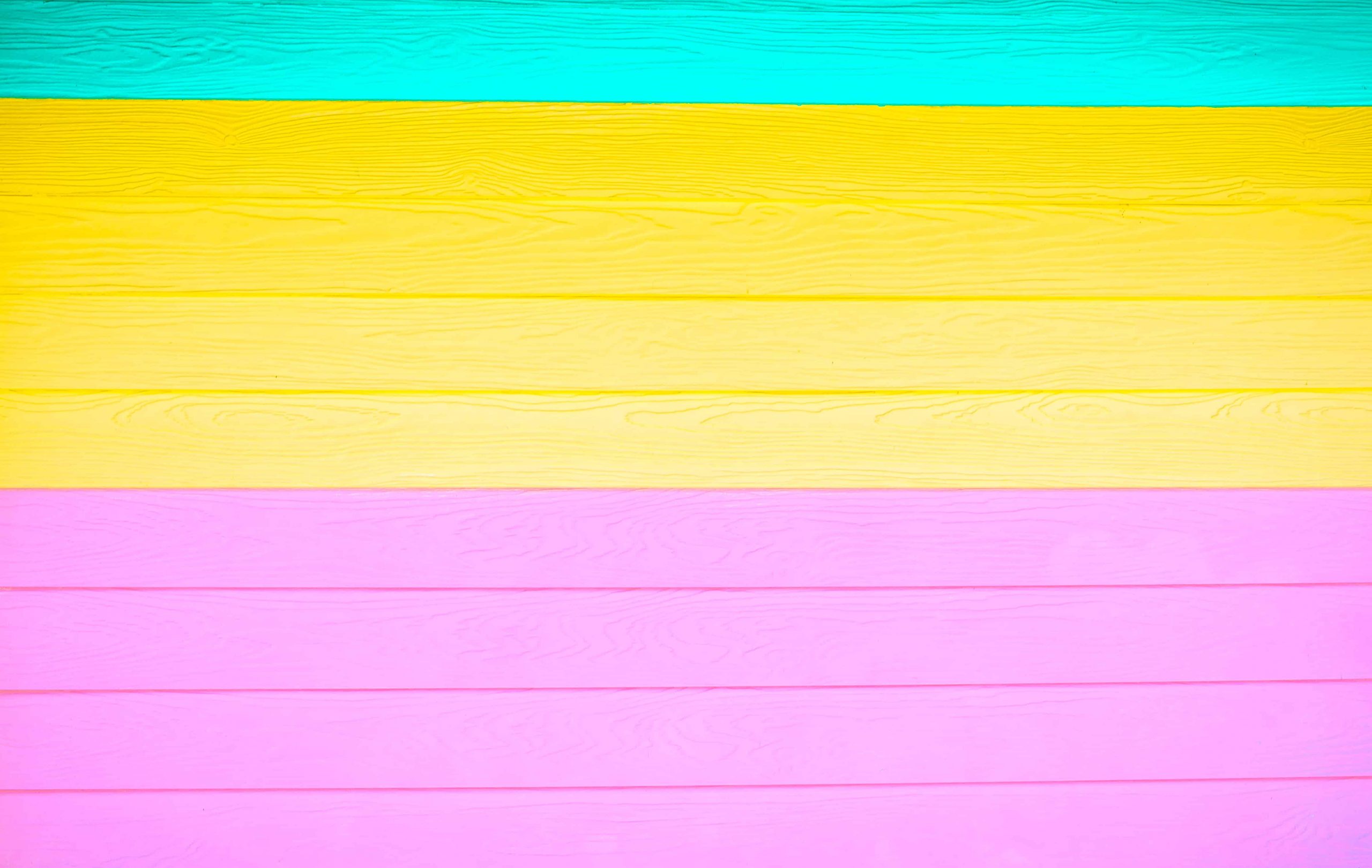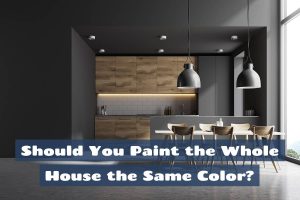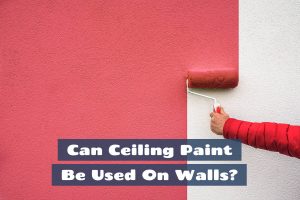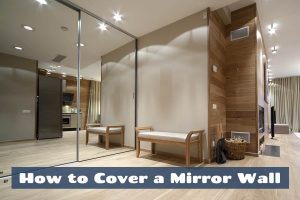Using more than one paint color on a wall can create a unique or artsy feel to a space. You could use this for a feature wall in a room or on every wall in a room for continuity. This is a style you could employ instead of wallpaper or as an alternative to an accent wall.
There are various ways you can transition paint colors on a wall, which we will explore below.
Horizontal Double Block Colors
A horizontal double block color transition is when you select two colors for the wall paint in a room and use one color for the lower half of the wall and one color for the upper half of the wall. The two colors will meet at a solid line that separates them both.
Traditionally, this is a style that would have seen the paint colors separated by a dado rail, chair rail, or surbase, but for a modern look, you should pass on the rail.
You can pick two colors that are completely different for a contrasting style, such as burnt orange and navy blue, or you could choose two shades of the same color, such as dark gray and pale gray, for a more subtle effect.
Whichever colors you settle on, always be sure to use the darkest shade on the bottom half of the wall. This helps to ground the space, while the lighter upper color will create a more open feel.
If you switch the colors around and apply the darker color on the upper half of the wall, then the room will feel out of balance and top-heavy. To achieve this look, decide which point you want the two colors to meet at, and draw a pencil line at this height across the wall.
This look works best when it is used on every wall in the room for a surrounding feel. The two colors can meet at any point you like, but if you cannot decide, then choose either hip height or head height. The lower the meeting line is, the more casual the effect will be, while the higher on the wall the meeting line is, the more formal the look will be.
Using your lightest color, apply paint to the top section, then wait for it to fully dry before applying decorator’s tape over it in a straight meeting line. Then apply your darker color on the bottom half of the wall, and remove the tape while it is still wet to reveal a sharp meeting line.
Solid Color Fade
For a solid color fade, you can transition several colors or shades on the wall, each one divided by a solid line. This follows the same premise as the horizontal double block color effect explained above, but it utilizes more paint colors so that you get a transition of a dark shade working through to a light shade gradually.
To achieve this, use decorator’s tape applied in straight level lines across the wall and paint each section in a different color. Use similar shades for a subtle transition or different colors for a bold transition. Remove the tape, and fill in the space underneath it using a fine paintbrush so that the colors meet at a straight line.
Gradual Color Fade
For a gradual color fade, you will want at least three different shades of the same paint color, and these will be applied on the wall in sections, going from the darkest shade at the bottom through to the lightest shade at the top.
The gradual look gives the effect that one shade is slowly fading into the next shade, and to achieve this, you will need to use a paint brush to mix each shade together on the wall.
You should blur the line between each color so that it is no longer distinct by dragging each shade slightly into the next section on the wall. Start with your darkest color and work your way through to the lightest shade, blurring the lines between each shade on the wall as you go.
Diagonal Color Break
A diagonal color break is an effect that has become popular over the last few years as part of the geometric trend. For this look, you will need two different paint colors, which are applied to either side of the wall, and they will meet at a solid diagonal line.
This can be great for dividing a room up into different areas. For example, in an open-plan room with a living room at one end and a dining room at the other end, you could paint the living room area in pale green for a fresh look and the dining room area in dark green for a more intimate feel.
The two colors can meet on the wall at a diagonal solid line, which will create an intentional feature out of the paint. To create this look, simply apply a piece of decorator’s tape in a bold diagonal straight line across a wall, from top to bottom.
Apply one paint color on one side of the tape and another color on the other side. Remove the tape, and fill in this part of the wall with one of the paint colors and a fine brush to maintain a neat, solid line.
Gradual Block Transition
A gradual block transition will take more patience to create, but it is a really effective way to use two different colors on the wall. For this look, you will need two different paint colors or shades and plenty of high-quality decorator’s tape.
The darkest paint will be applied at the bottom of the wall, and the lightest paint at the top of the wall. Rather than meet at a center point, they will start fading into each other a third of the way up from the bottom of the wall and a third of the way down from the top of the wall.
You should divide the wall into three equal sections using horizontal pencil lines and then apply decorator’s tape over these lines. The bottom third will be painted in the dark paint, and the top third will be painted in the lightest paint. The middle third, which occupies the central space on the wall, will need to be further divided up into horizontal rows using decorator’s tape.
Each row will be painted in the alternating paint color, and each row should not be equal in measurement. The lighter paint color should be painted in wide rows at the top of the central third section, gradually working down to thin rows as it nears the bottom third section.
The darker paint color should be applied in the opposite way, in wide rows from the bottom of the central third, gradually moving to thinner rows as it meets the lighter paint color at the upper third section. You will need to remove the decorator’s tape and use a fine paintbrush to carefully fill in the parts of the wall where the decorator’s tape was covering.
The finished result should look like each color is gradually fading into the next color but within solid sections rather than blurred sections.
